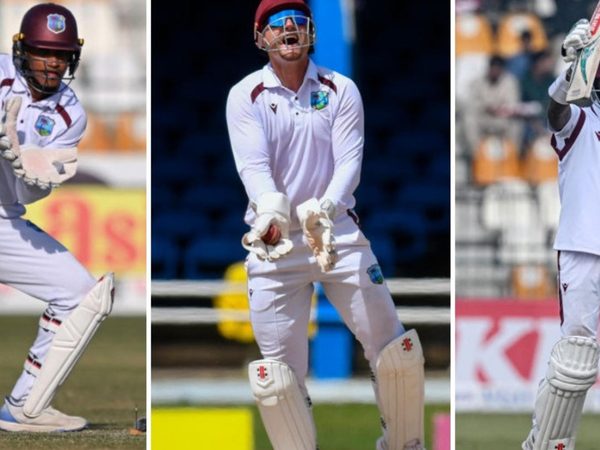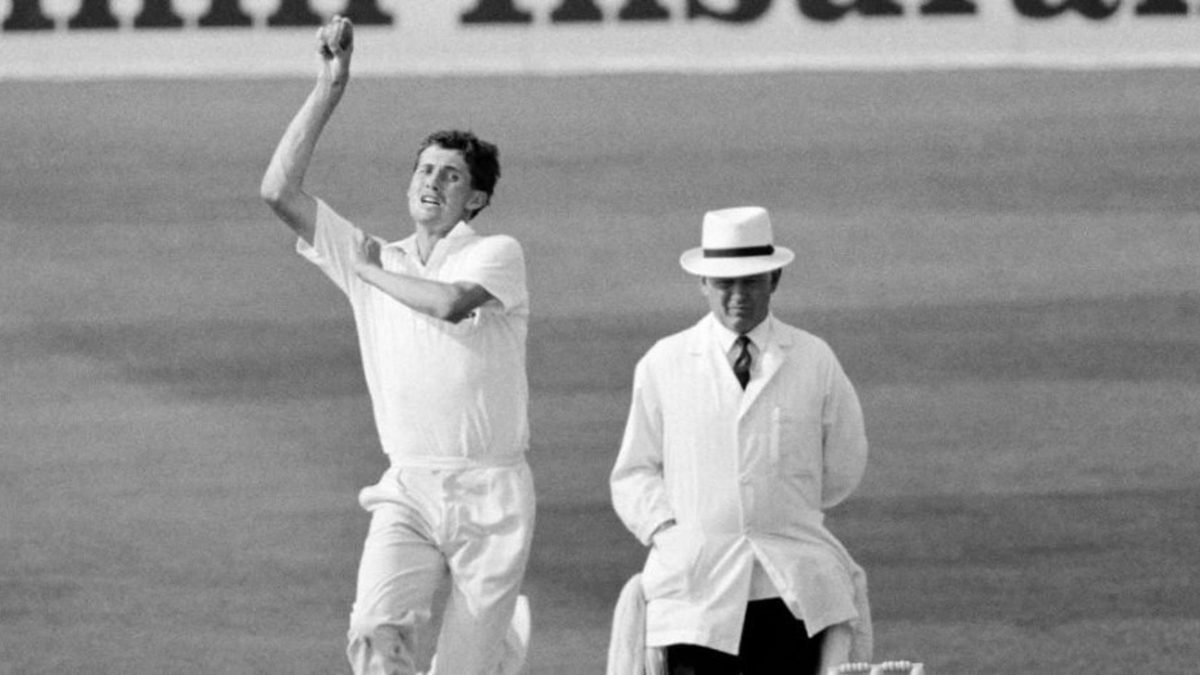
Although a good enough bowler to make his county debut as an 18-year-old, still at school, and then picked for a full overseas England tour three years later, Neil Foster nevertheless took seven years to graduate from being considered a player with Test potential to holding down a regular place in the England side in 1987. In the intervening years there was a brief flirtation with a career in soccer, a serious spinal injury, and sparse Test appearances which gave him too little time to establish himself.
The talented Neil Foster had to battle a serious spinal injury and avert the lure of a career in football before becoming England’s leading strike bowler in 1987. He was named a Wisden Cricketer of the Year the following spring.
In an age when state-controlled comprehensive schools were devoting more and more time to soccer, and less attention to cricket, Neil Alan Foster, born at Colchester on May 6, 1962, needed a keen cricketing father to maintain his interest in the summer game. At Philip Morant School in Colchester, Foster in his early teens was a tall, fast centre-forward, later turned central defender, who attracted the interest of the local Football League side. School cricket was, in the main, limited to 20-over games after lessons, and Foster’s development owed more to contacts at the nearby grammar school, who pushed him forward to the Essex Schools Under-14 side, and to his family.
Raised in the Essex village of Wivenhoe, Foster from a tender age was performing 12th-man duties for the local club, where his father, Alan, was considered the Geoff Boycott of the side. Foster says, He was a keen, if somewhat deliberate opening batsman, gentle in-swing bowler and immensely proud of his achievements at club level. Later they switched to another Essex side, Mistley, where Foster from the age of 14 began to develop the high upright action that was to become the hallmark of his bowling in the years that followed.
Impressive performances for Essex at the 1979 county youth festival at Cambridge, and a handful of Second XI games during the summer holidays, led to his being offered a two-year contract by Essex the following spring, and within weeks he made his first-class debut.
It was on the night of his 18th birthday that Foster was summoned to Ilford to join an injury-hit side to play Kent the following day. With insufficient Second XI games under his belt to qualify for a cap or a sweater, he had to borrow equipment, and his career began inauspiciously when his first delivery produced four wides. “I’d only been used to the soft grounds of club cricket up until then, and on the harder Ilford surface I lost my footing in the delivery stride,” he recalled.
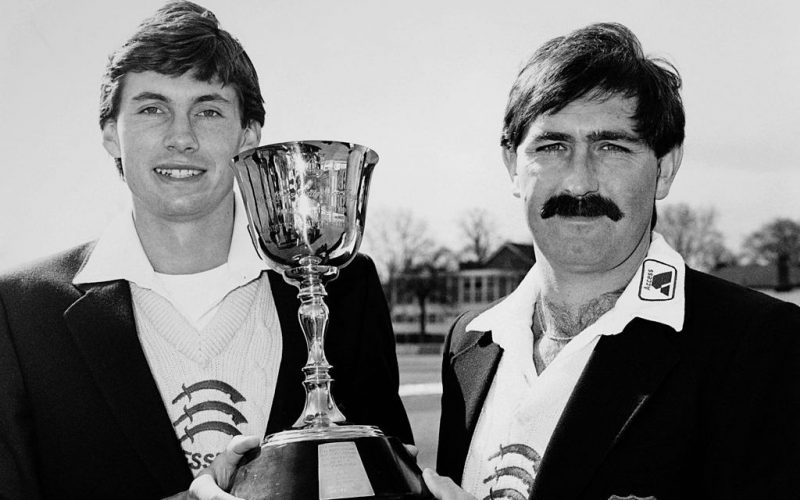 Neil Foster and Graham Gooch pose with the County Championship trophy which Essex won for the 1983 season
Neil Foster and Graham Gooch pose with the County Championship trophy which Essex won for the 1983 season
Fortunately, his confidence did not suffer and he quickly claimed two impressive scalps. England Test batsmen Bob Woolmer and Chris Tavare – the latter fresh from scoring 84 and 115 against Essex in the MCC match at Lord’s – both fell to catches behind the wicket. In a later spell he also accounted for century-maker Alan Ealham, but even though he finished the innings with 3- 51, it was to be his only Championship match until the start of the 1982 season.
Leaving school with six O levels and one A, he was offered a two-week soccer trial the following winter with Ipswich, then managed by Bobby Robson, who was later to take charge of the England side. Eventually the trial lasted nearer three months while Robson tried to make up his mind whether Foster would make the grade as a professional footballer. With no decision forthcoming before Essex returned for pre-season training, he left Portman Road and played very little soccer thereafter. As a diversion from cricket, he later turned to golf with his wife, Romany, and at the end of last season was playing off a handy 16.
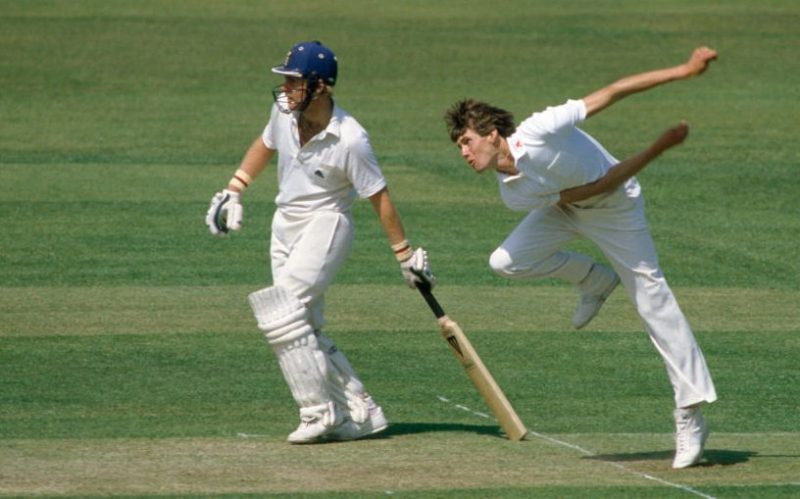 Neil Foster in action for Essex during the 1984 season-opening match against MCC at Lord’s
Neil Foster in action for Essex during the 1984 season-opening match against MCC at Lord’s
His only outing for Essex in 1981 was against the Sri Lankan tourists, but he made a big enough impression while playing for Young England against Young India to be awarded a Whitbread Scholarship, which sent him that winter to the Tasmanian club side, Glenorchy. There he began to suffer the occasional bout of back stiffness, which deteriorated on his return home. Specialists diagnosed stress fractures in two vertebrae near the base of his spine, and for three months he was forced to wear a corset of plaster as doctors hoped the injury would heal by itself. By September 1982, however, there was no improvement, and surgeons opted to insert two six-inch metal plates, secured by four screws, in his back.
Three months later, one of those screws had to be removed after it worked loose, but after supervised rehabilitation at a clinic in Clacton, he was passed fit to start the 1983 season with Essex. In August he was picked for his Test debut against New Zealand at Lord’s. By his own admission Foster did not bowl well in the match, claiming only the wicket of Jeremy Coney while conceding 75 runs in two innings.
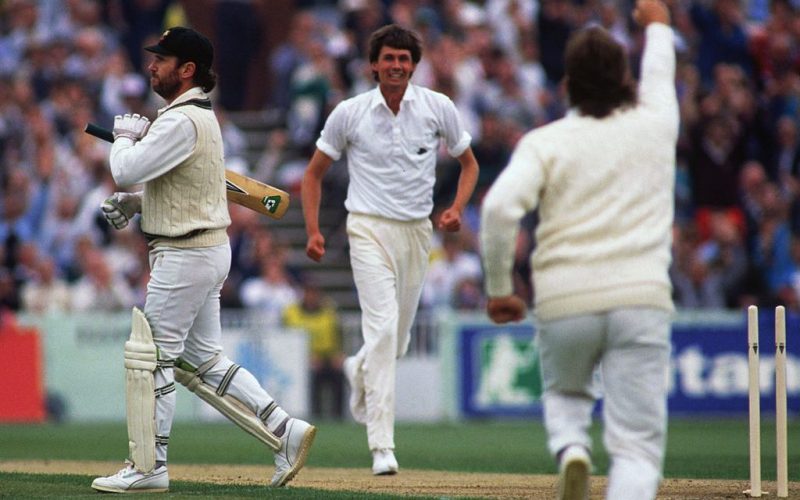 Foster cleans up Allan Border in an ODI game at Old Trafford, circa May 1989
Foster cleans up Allan Border in an ODI game at Old Trafford, circa May 1989
But there were extenuating circumstances. Shortly before the game, X-rays showed that another screw had loosened, and with a blood blister evident he was forced to have fluid drained from his spine twice a day during the Test. The match ended inside four days, and by the following Friday Foster was back in hospital having the plates and two abscesses removed. Fortunately, it was to be almost six months before England began their winter tour to New Zealand and Pakistan, so giving Foster time to rebuild the strength in his back, despite the lack of a support.
For the next three years Foster was to be the yo-yo man of English cricket, popping up at home for the Lord’s Tests of 1984 and 1985, but at least having the satisfaction of making each winter tour and producing match-winning figures of 11-163 against India at Madras on a pitch that had broken the hearts of many other pacemen.
Although with his late movement away from the bat Foster picked up 105 wickets for Essex in 1986, and was picked for England’s tour of Australia, he failed to play in a Test and decided to reappraise his attitude towards playing for England. “I decided at the start of the 1987 series against Pakistan that if I got into the England team, I would simply try to produce my county form. In my early Tests I always felt on trial, and as a result tended to try to bowl defensively. Whereas with Essex I had always been regarded as an attacking bowler.”
Bristling with an aggression which belies the soft burr of his East Anglian accent, Foster finally broke through at Leeds, where he took 8-107 in 46.2 overs and emerged with credit from a match which England lost by an innings. Retained throughout the series, he finished the summer as England’s leading wicket-taker with 15 victims at an average of 22.60.
Although Essex’s fortunes had fallen into sharp decline, Foster still took 86 first-class wickets in 1987, and with Ian Botham unavailable and Graham Dilley unfit, Foster, a mere onlooker in Australia less than twelve months earlier, departed with England for the World Cup in India and Pakistan as the side’s leading strike bowler. His place in the side was strengthened by several useful late-order innings, in which he hit hard with a straight bat, and a growing reputation as an athletic outfielder with a strong, low return.
Neil Foster last played for England in the second Test of the 1993 Ashes at Lord’s. He finished with 88 wickets from 29 Tests at 32.85, including five five-fors.

